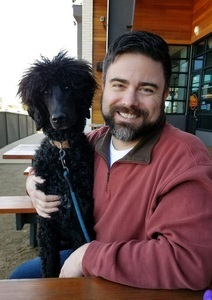11054762
Medicare Functional Classification Levels - K-Levels
Beschreibung
Keine Merkmale angegeben
Quiz von Ben Williams, aktualisiert more than 1 year ago
Mehr
Weniger

|
Erstellt von Ben Williams
vor etwa 7 Jahre
|
|
Zusammenfassung der Ressource
Frage 1
Frage
The patient does not have the ability or potential to ambulate or transfer safely with or without assistance and a prosthesis does not enhance quality of life or mobility.
Antworten
-
K0
-
K1
-
K2
-
K3
-
K4
Frage 2
Frage
The patient has the ability or potential to use a prosthesis for transfers or ambulation on level surfaces at fixed cadence. Typical of the limited and unlimited household ambulator.
Antworten
-
K0
-
K1
-
K2
-
K3
-
K4
Frage 3
Frage
The patient has the ability or potential for ambulation with the ability to traverse low-level environmental barriers such as curbs, stairs, or uneven surfaces. Typical of the limited community ambulator.
Antworten
-
K0
-
K1
-
K2
-
K3
-
K4
Frage 4
Frage
The patient has the ability or potential for ambulation with variable cadence. Typical of the community ambulator who has the ability to traverse most environmental barriers and may have vocational, therapeutic, or exercise activity that demands prosthetic utilization beyond simple locomotion.
Antworten
-
K0
-
K1
-
K2
-
K3
-
K4
Frage 5
Frage
The patient has the ability or potential for prosthetic ambulation that exceeds basic ambulation skills, exhibiting high impact, stress, or energy levels. Typical of the prosthetic demands of the child, active adult, or athlete.
Antworten
-
K0
-
K1
-
K2
-
K3
-
K4
Frage 6
Frage
No ability to ambulate or transfer safely.
Prosthesis does not enhance mobility.
Antworten
-
K0
-
K1
-
K2
-
K3
-
K4
Frage 7
Frage
Household Ambulation.
Transfers and ambulates on Level Surfaces.
Antworten
-
K0
-
K1
-
K2
-
K3
-
K4
Frage 8
Frage
Limited Community Ambulation.
Able to traverse low-level environmental barriers.
Single Speed Ambulator
Antworten
-
K0
-
K1
-
K2
-
K3
-
K4
Frage 9
Frage
Community Ambulation.
Prosthetic demands beyond simple ambulation.
Variable Cadence.
Able to traverse MOST environmental barriers.
Antworten
-
K0
-
K1
-
K2
-
K3
-
K4
Frage 10
Frage
Able to perform prosthetic ambulation exceeding basic skills (e.g. high impact, athletics).
Includes active adults, children, athletes, and bilateral amputees.
Antworten
-
K0
-
K1
-
K2
-
K3
-
K4
Frage 11
Antworten
-
No ability to ambulate or transfer safely.
-
Prosthesis does not enhance mobility.
-
Does not cover any prosthetic components.
-
Household Ambulation.
-
Covers basic feet and basic knees.
-
Able to traverse low-level environmental barriers at a Fixed Cadence.
-
Prosthetic demands beyond simple ambulation.
-
Able to traverse MOST environmental barriers.
-
Includes active adults, children, athletes, and bilateral amputees.
-
Able to perform prosthetic ambulation exceeding basic skills (e.g. high impact, athletics).
Frage 12
Antworten
-
Household Ambulation.
-
Transfers and ambulates on Level Surfaces.
-
Covers basic feet and basic knees.
-
Level Surfaces at a Fixed Cadence.
-
Prosthesis does not enhance mobility.
-
Limited Community Ambulation.
-
Able to traverse low-level environmental barriers at a Fixed Cadence.
-
Covers multi-axial feet and axial rotation units.
-
Prosthetic demands beyond simple ambulation.
-
All components are covered.
Frage 13
Antworten
-
Limited Community Ambulation.
-
Able to traverse low-level environmental barriers at a Fixed Cadence.
-
Covers multi-axial feet and axial rotation units.
-
Transfers and ambulates on Level Surfaces.
-
Covers basic feet and basic knees.
-
Community Ambulation.
-
Variable Cadence.
-
Able to traverse MOST environmental barriers.
-
Covers dynamic response feet and fluid knees.
-
Includes active adults, children, athletes, and bilateral amputees.
Frage 14
Antworten
-
Community Ambulation.
-
Prosthetic demands beyond simple ambulation.
-
Variable Cadence.
-
Able to traverse MOST environmental barriers.
-
Covers dynamic response feet and fluid knees.
-
Transfers and ambulates on Level Surfaces.
-
Able to traverse low-level environmental barriers at a Fixed Cadence.
-
All components are covered.
-
Includes active adults, children, athletes, and bilateral amputees.
-
Able to perform prosthetic ambulation exceeding basic skills (e.g. high impact, athletics).
Frage 15
Antworten
-
All components are covered.
-
Includes active adults, children, athletes, and bilateral amputees.
-
Able to perform prosthetic ambulation exceeding basic skills (e.g. high impact, athletics).
-
Covers dynamic response feet and fluid knees.
-
Variable Cadence.
-
Able to traverse MOST environmental barriers.
-
Community Ambulation.
-
No ability to ambulate or transfer safely.
-
Prosthesis does not enhance mobility.
-
Covers basic feet and basic knees.
Möchten Sie mit GoConqr kostenlos Ihre eigenen Quiz erstellen? eigenen Mehr erfahren.
